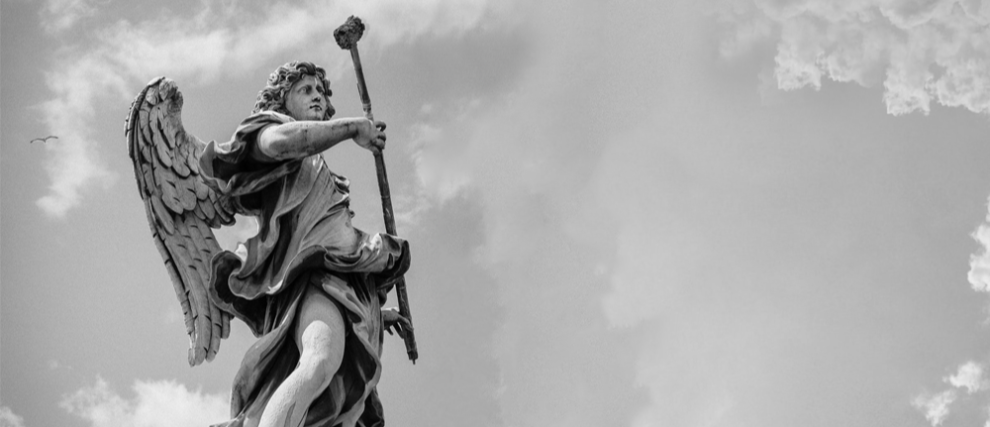Miraculous Healings
Accounts of miraculous healings abound. They can be attributed to Jesus, of course, the Blessed Virgin Mary, or to saints such as: Saint Carlo Acutis, Saint Anthony of Padua, Saint Joseph, Saint Charbel, Saint Thérèse of Lisieux, the Holy Curé of Ars, Saint Charles de Foucauld, or even the Archangel Saint Raphael. These are miracles recognized by the Catholic Church after a study and an investigation (over a period of 5 to 15 years) into the illness of the miraculously healed person and the healing process. The Church is indeed very cautious about recognizing miraculous healings. The healed persons are usually closely monitored by doctors who attest to the unexplained healing before the Church can take up the case.
What is a Miraculous Healing?
In Catholicism, healing through faith is regularly attributed to thaumaturgy (one speaks of a thaumaturgical saint, for example). Thaumaturgy is the fact that a person is the intermediary of God's power and only needs to lay hands on the body of a sick person to heal them. But, miraculous healings are very often linked to fervent prayers to particular saints. Miracles are, moreover, criteria for the canonization of a person.
A healing can also be associated with a pilgrimage site, like the sanctuary of Lourdes for example, where water reputed to be miraculous flows.
A miraculous healing is above all a healing of the soul because God is the physician of souls. But, sometimes, His divine action can unfold in the body; we then speak of a physical, visible healing. A miraculous healing is therefore in reality a double healing: a healing of the spirit and the body. The sick person literally feels their healing through psychosomatic signs (tremors, sensation of heat...) or spiritual signs (sensation of inner peace, great joy, calm...). The sick person then has the intimate conviction of having been healed by the Lord.
The Authentication Criteria for a Miraculous Healing
To be recognized as miraculous, unexplained healings must be authenticated by a medical approach and a spiritual approach, in an inseparable way. They will thus be attributed to a divine intervention, notably through the intercession of a saint.
For medicine to recognize a case of miraculous healing, it must be able to observe real facts, without being able to explain them through science and logic. There must therefore be a "transition from a proven pathological state to an obvious state of health".
The role of medicine is then to observe the healing, take its context into account, guarantee it by providing precise documents before and after the healing, and certify it with experts.
The Medical Conditions
Finally, to conclude in favor of a miraculous healing that is "certain, definitive, and medically unexplained", the investigation must meet several conditions:
the illness must have been established by a precise diagnosis and declared real
the prognosis for the person must be determined, even fatal, in the short term
the healing must be sudden and surprising
the prescribed treatment cannot be the origin of the healing or cannot even have helped it
The Lambertini Criteria
The Church then interprets the healing according to the seven "Lambertini criteria". Cardinal Prospero Lambertini, the future Pope Benedict XIV, established them between 1734 and 1738:
The illness must be serious, with an unfavorable prognosis
The illness must be known
The illness must be organic: this means there must be objective, biological, and radiological criteria (psychological illnesses are not recognized)
There must be no treatment that interfered with the healing
The healing must be sudden, immediate, and instantaneous, without convalescence.
There must be a return of all vital functions without any regression
The healing must not be a simple remission but a lasting and definitive healing
The Context of a Miraculous Healing
The context of faith is obviously primordial. Furthermore, Pope Saint John Paul II said to the members of the International Medical Committee of Lourdes on November 18, 1988: "Many healings constitute a reality that finds its explanation only in the order of faith, which scientific examination cannot deny a priori and which it must therefore respect, precisely in its own order".
Difference Between "Spontaneous Remission" and "Miraculous Healing"
The Church works closely with medicine to differentiate between "spontaneous remissions" (they are unexplained by medicine but are exclusively physical. The healed person is absolutely unaware of it. They are therefore insignificant healings for the Church) and miraculous healings. It should be known that in Lourdes only 70 miracles have been recognized as miraculous. However, the medical office has observed more than 3000 objectively inexplicable healings. Bishop André Duplex, professor at the Catholic Institute of Toulouse, had then specified "Not every unexplained healing is necessarily miraculous for the Christian faith, and a healing, even one explained medically, can be a miracle".
To conclude, two questions must therefore be asked before considering a healing miraculous:
Does the healing escape the usual laws of the evolution of diseases in medicine? → the healing must go against the predictions of the established diagnosis. The healing must be sudden, unpredictable, and instantaneous. The recovery of the healed person must be total and astonishing regarding the anatomical lesions caused by the illness.
Do the healed person and the witnesses seek to attribute this healing to the Lord? Does it invite them to believe in divine intervention?
Here are some beautiful prayers to ask for the grace of a miraculous healing for oneself or for a loved one and for divine protection.
Continue Your Prayer with Hozana!
Discover wonderful prayer communities thanks to Hozana!
Through this prayer community,
Receive once a month, across all Christian denominations (Catholic, Orthodox, and Protestant) and pray for conversions!
Finally, participate in this to grow spiritually!

